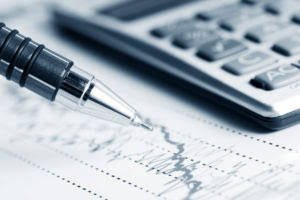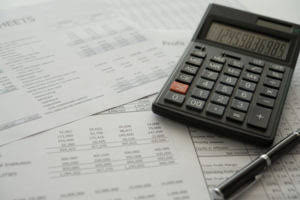
Matching your label to the asset’s use case ensures better performance and fewer replacements. Even better, most systems let you set alerts when assets are due for inspection, cleaning, or recalibration—reducing preventable failures. Based on the purpose of depreciation mentioned above, depreciation should only commence when the asset is ready for use and https://leeoproductions.com/what-are-advisory-services-accounting-advisory/ is at the location that it is intended to be used. The same process will be repeated every year at the end of the financial year. Shaun Conrad is a Certified Public Accountant and CPA exam expert with a passion for teaching. After almost a decade of experience in public accounting, he created MyAccountingCourse.com to help people learn accounting & finance, pass the CPA exam, and start their career.

Examples
- For example, due to a decline in market demand, the business determines that the manufacturing machine’s recoverable amount is now £90,000 (down from £110,000).
- Depreciation is the systematic allocation of the asset’s cost over its estimated useful life.
- Founded in 1993, The Motley Fool is a financial services company dedicated to making the world smarter, happier, and richer.
- A manufacturing firm relies on its machinery to produce products, while a logistics company depends on its fleet of vehicles for distribution.
- When a company acquires a plant asset, accountants record the asset at the cost of acquisition (historical cost).
- Plant assets are long-term, physical assets used in business operations to produce goods or services.
They include machinery, equipment, and buildings needed to make products or provide services. These fixed assets help companies create income by being part of the production process or by getting rented out. With technology at the heart of modern operations, software shapes how businesses run–from accounting systems to customer management tools.
Label and track your education organization’s property with durable barcode labels.

One of the CNC machines broke down and Tom purchases a new machine for $100,000. The bookkeeper would record the transaction by debiting the plant assets account for $100,000 and crediting the cash account for the same. A plant asset is an asset with a useful life of more than one year that is used in producing revenues in a business’s operations. Plant assets are reported within the property, plant, and equipment line item on the reporting entity’s balance sheet, where it is grouped within the long-term assets section.
Examples of Fixed Assets and Plant Assets

Businesses own numerous assets, including real estate, vehicles, machinery, and intellectual property. These assets contribute to and can be critical to the company’s financial well-being and balance sheet. Accounting for assets can be complicated because they’re divided into several categories for accounting purposes. These assets are actively used in the normal course of business to produce goods or services, not held for speculative investment or immediate resale. A manufacturing plant uses its equipment to create products, directly contributing to its core business activities. This operational use differentiates them from items like inventory, which are specifically held for sale.
- A plant asset is an asset with a useful life of more than one year that is used in producing revenues in a business’s operations.
- Plant assets can vary widely depending on the nature of a company’s operations.
- Although generally lower in cost than machinery or buildings, these assets contribute to a productive and organized working environment.
- Knowing when and how much to invest in improvements helps manage capital expenditures wisely.
- This classification distinguishes them from current assets, which are expected to be used or converted to cash within a year.
A manufacturing firm relies on its machinery to produce products, while a logistics company depends on its fleet of vehicles for distribution. The physical plant assets presence and functionality of plant assets directly contribute to a business’s operational efficiency and output. Accounting for plant assets involves specific practices that accurately reflect their value and impact on a business’s financial statements. Understanding these practices ensures better management of resources and effective financial reporting.
What Classifies as Property, Plant, and Equipment?
- They record the cost of permanent landscaping, including leveling and grading, in the Land account.
- This means every year, a portion of their value would be recorded as an expense in your income statement, reducing the value of these assets on your balance sheet.
- This cost would be capitalised and added to the asset’s book value on the balance sheet.
- In May 2017, Factory Corp. owned PP&E machinery with a gross value of $5,000,000.
- In contrast, plant assets are long-term assets like buildings, machinery, and equipment that contribute to the company’s core operations over multiple years.
- Based on the purpose of depreciation mentioned above, depreciation should only commence when the asset is ready for use and is at the location that it is intended to be used.
- After almost a decade of experience in public accounting, he created MyAccountingCourse.com to help people learn accounting & finance, pass the CPA exam, and start their career.
Plant assets are subject to depreciation, which is the systematic allocation of Catch Up Bookkeeping their cost over their useful life. This accounting process reflects the gradual decline in an asset’s value or utility due to wear and tear, obsolescence, or usage over time. Companies generally reassess plant asset values annually, especially for impairment purposes, or if significant changes, such as major repairs or updates, occur. Regular reassessment ensures that financial statements reflect the true value of assets.

These assets are long-lived, with a useful life extending beyond a single accounting period, typically more than one year. Plant assets are used in the ordinary course of business operations and are not held for sale to customers. It is interesting to note that IAS 16 has pointed out that a plant asset purchased for safety or environmental reasons could qualify as a plant asset even if it does not contribute to revenue. This method implies charging the depreciation expense of an asset to a fraction in different accounting periods. This method explains that the utility and level of economic benefit decrease as the age of asset increases. This depreciation is calculated during each reporting period, and the measurements are cumulative.




